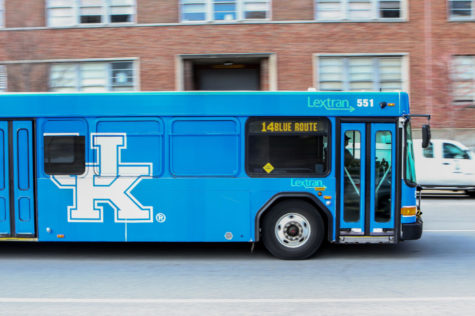UK launches alert system, encounters technical problems
January 15, 2008
UK activated its emergency alert system yesterday morning, months after originally planning to have the system running. More than 2,500 people registered in the first day, but technical problems kept many from signing up.
About 14,000 people tried to sign up with the system in its first hour but were unable to because the registration process locked up from the heavy online traffic.
The Office of Emergency Management started receiving phone calls and e-mails concerning difficulties with the registration Web site yesterday morning a little more than an hour after President Lee Todd sent a campus-wide e-mail encouraging sign-ups.
Christy Giles, director of UK’s Office of Emergency Management, said her office had tested the sign-up process before officially launching the system, but only with a fraction of the people.
UK’s vendor for the system, Wide Area Rapid Notification, has been working to fix the problems with the sign-up process.
“I’m pleased with the overwhelming response,†Giles said, “and I hope that people who were not able to register today will go back and sign up later in the week as we iron out the kinks in the process.â€
Of the thousands of people who attempted to sign up for UK Alert, 2,634 were able to log on and register for an account as of yesterday evening.
Most of those people were able to finish the process and enter their contact information, Giles said, but there were a few people who were kicked off before they finished signing up. Once the traffic on the Web site slows down, those people will be able to add their information using the log-in name they created yesterday.
The Web site (www.uky.edu/UKAlert) allows anyone connected to UK, including students, faculty, staff, parents and Lexington residents, to sign up to receive text messages, e-mails, faxes or phone calls in case of a campus emergency.
The number of people who tried to register for UK’s system in its first hour of operation rivals the number of people who have signed up for the alert systems that other universities launched in the fall.
Michigan State University launched its system in August, and 13,000 people have since signed up. Ohio State University opened registration for its text-messaging system in late September. Within a month, 12,000 people in its campus community had signed up, and now 15,500 have registered.
People at North Carolina State University began signing up for its system before the winter break. About 10,000 people have registered, but the university is waiting to implement the system until more sign up.
“I think what you’re going to find is campuses are only getting 25 percent or fewer people to sign up,†said David Rainer, associate vice chancellor for environmental health and public safety at NC State. “We’re trying to run an extensive advertising campaign to get people to sign up and to raise awareness.â€
Giles said the anticipation that built up within the UK community over the last four months might have played a role in such an immediate response.
“Everybody’s been waiting on (the implementation of UK Alert) — the interest was so beyond our expectations on the first day,†she said. “We’ll work through the glitches as quickly as we can.â€
President Lee Todd sent out a campus-wide e-mail at about 9 a.m. encouraging members of the community to sign up for UK Alert, and offering students and employees a chance to win one of four iPhones if they registered for the system.
“It is important to remember that for the emergency notification system to truly work, we need members of our campus community to sign up for the service,†he said in the e-mail.
UK started looking to include text messages in an alert system after the Virginia Tech shootings in April. The university signed a purchase order for the emergency notification system in late August, with hopes of implementing it within a few weeks.
When the system was not up and running by late October, officials said technical problems had caused the delay and that the system would be implemented in November. It was ready to launch in December, but UK waited until now to start the sign-up process because it did not want to distract students at the end of the semester, Giles said.
Some representatives from other universities said once their program was in place, the sign-up process could happen immediately.
“We ran a few tests in the summertime and had it ready to go by the end of August,†said Bill Wardwell, the inspector in charge of emergency management at Michigan State.
The University of California-Davis uses the same vendor as UK and has not yet implemented the system it signed a contract for in October. The school is trying to integrate the WARN system with its current databases rather than having people fill out new contact information, said Valerie Lucus, emergency and continuity manager at UC-Davis.



















































































































































